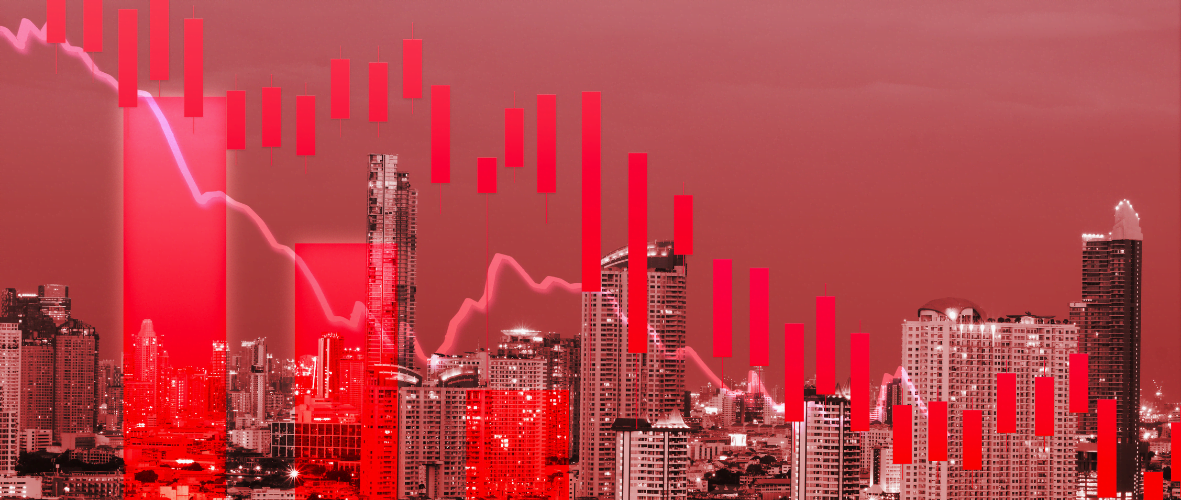How Risky is The Stock Market?

As an affiliate, you likely get asked all the time by clients and prospects about the level of risk involved with investing in the stock market. With daily headlines highlighting market fluctuations and company failures, it's no surprise the stock market makes many people uneasy. However, the reality is that risk is an inherent part of investing and can be managed through diversification and maintaining a long-term perspective.
In this article, we'll take a detailed look at various types of risk present in equity markets and strategies for mitigating their impact. We'll analyze historic market data and performance to illustrate both downside risks as well as long-term growth potential. You'll learn approaches for assessing individual companies and constructing balanced, globally diversified portfolios aligned with unique time horizons and risk tolerances. Real-world examples will highlight risk management in action too.
By the end of this article, you'll have a solid understanding of the top risks when investing in stocks, allowing you to steer client discussions away from fear and toward wise, research-based investing. Equipped with these understandings, you may assist investors who are hesitant to take on risk in feeling empowered to partake in historically high long-term returns that have changed millions of lives by generating capital and achieving financial independence.
Understanding Types of Stock Market Risk
Before diving into specifics, it's important to define the various types of risk present in equity investing. These include market risk, inflation risk, business or company risk, financial risk, political/government risk, and liquidity risk.
Market risk pertains to macroeconomic and societal events that influence overall market levels. Inflation risk relates to the erosion of purchasing power over time if returns don't outpace rising consumer prices. Company risk involves industry-specific or management issues that can impact individual holdings. Financial risk encompasses potential debt problems or accounting irregularities. Political shifts and laws present government risk while liquidity risk refers to the inability to trade assets due to low demand in times of volatility.
Because of its connection with brief drops in the market, market risk is typically the one that receives the most attention among these. Nonetheless, past performance indicates that being focused on the long term reduces these risks during economic downturns. Furthermore, thorough due diligence and diversification across several markets, sectors, and geographical areas may help reduce business and financial risks. Investing wisely in solid companies is the main goal of overall risk management, as opposed to trying to "time" changing prices.
Market Risk: An Everyday Reality or Long-Term Non-Issue?

Daily market fluctuations stir up emotions but don't necessarily reflect long-term realities. While the S&P 500 sees an average decline of 14% every year, four out of every five years are also positive for stocks overall. The index has produced positive 10-year returns in approximately 92% of all rolling decade-long periods throughout its existence. Over even longer horizons, market losses largely disappear altogether.
According to a J.P. Morgan Asset Management analysis, a portfolio that was entirely invested in stocks had positive inflation-adjusted returns throughout both lengthy periods 100% of the time. The study looked at every twenty and thirty years from 1926. This shows that investors who stick with their investments during the anticipated short-term volatility eventually recover their temporary losses and then more. To reap the benefits of risk assets' enormous wealth-generating potential over time, one must possess both patience and perspective.
Company and Industry Risks: Opportunity in Adversity
While significant company-specific issues can occasionally cause bankruptcies or long-term impairment, history also shows that industries constantly evolve and prosper. For example, consider the fate of traditional retailers that were slow to adapt versus agile e-commerce winners over the last 20 years. Or how alternative energy sources have grown tremendously as some fossil fuel companies have faced challenges.
Finding undervalued businesses positioned for turnarounds or leadership changes requires careful examination. One failure does not wreck the ship when holdings are kept to ≤5% of the entire portfolio and the portfolio is diversified across many industries. Furthermore, bear markets have traditionally offered exceptional chances to buy high-quality equities at significant discounts and with selection. From a perspective, downturns that feel terrible at the time frequently end up being the best times to purchase. All things considered, careful stock selection combined with diversification enables participation in both recoveries and emerging markets.
Inflation Risk: An Ongoing Concern or Overstated Fear?
Conventional wisdom holds that inflation wreaks havoc on a portfolio's purchasing power over the long haul. While true in extreme cases, moderate and expected levels of inflation have little impact on long-term market returns according to data. An analysis from Crestmont Research found that "normal" inflation between 1-3% has historically had an immaterial effect on 20+ year stock market returns.
Between 1802 and 2015, U.S. equities produced an estimated 6.6% annualized real return despite swings between inflationary and deflationary periods throughout that span. Even during the "high inflation" 1970s, a decade infamous for price hikes, the S&P 500 generated an annualized 11.2% nominal return that significantly outstripped consumer price increases. Prudent indexing aimed at quality, dividend-paying businesses and sectors like healthcare can further dampen purchasing power volatility. Overall, inflation hasn't proved truly problematic for investors maintaining multi-decade horizons.
Mitigating Risk through Broad Diversification

While past performance can't guarantee the future, diversifying across globe-spanning indexes provides robust protection against unpredictable risks. By focusing on low-cost ETFs or index mutual funds that track total domestic or international stock markets, one holds small, mid-, and large-cap securities across all sectors and styles. Complementing the US market with developed and emerging international market exposure delivers even greater diversification benefits with still robust long-term expected returns.
Additionally, including various asset classes like bonds, commodities, and real estate trusts helps dampen volatility relative to an all-equity portfolio during short sell-offs while participating in stocks' long-run upside. Rebalancing periodically back to targeted allocation ranges ensures discipline in profit-taking and buying on dips which reduces emotions and impulsive behavior often tied to behavior gaps. Overall, broad global diversification is crucial for minimizing unavoidable market risk through risk-adjusted returns.
Behavioral Risk: The Greatest Threat of All?
While macro risks certainly exist, behavioral tendencies like overconfidence, anchoring, and herd mentality statistically pose the largest threat to wealth accumulation over long periods. A habit of chasing short-term movements by timing entries and exits often causes investors to buy high and sell low, the exact opposite of a successful strategy. Additionally, abandoning stocks during steep corrections means missing out on quality companies' recoveries and compounding dividends over ensuing bull markets.
Academic research shows that 96% of a portfolio's returns can be explained by strategic asset allocation rather than market-timing or security selection tactics. Maintaining discipline through volatility allows participation in inevitable recoveries, leaving emotion at the door. Dollar-cost averaging prevents attempting to "pick tops and bottoms" and automatically buys more shares on dips. Automating contributions encourages a buy-and-hold philosophy proven to outperform other approaches time and again, minimizing behavioral derailment from short-term fluctuations.
Conclusion
In summary, while daily headlines focus on short-term anxieties, prudent long-term investors understand that risk is simply a factual part of equity returns. Historical analysis demonstrates that diversifying across global market caps and asset classes helps participate in compounding wealth creation while managing inevitable downturns. Those able to look past sensationalized news stories and maintain level-headed discipline through volatility ultimately realize outstanding inflation-adjusted performance that transforms financial pictures over decades. As a broker affiliate, arming clients with insights on prudent risk management empowers participation in the market's tremendous wealth-generating potential.

